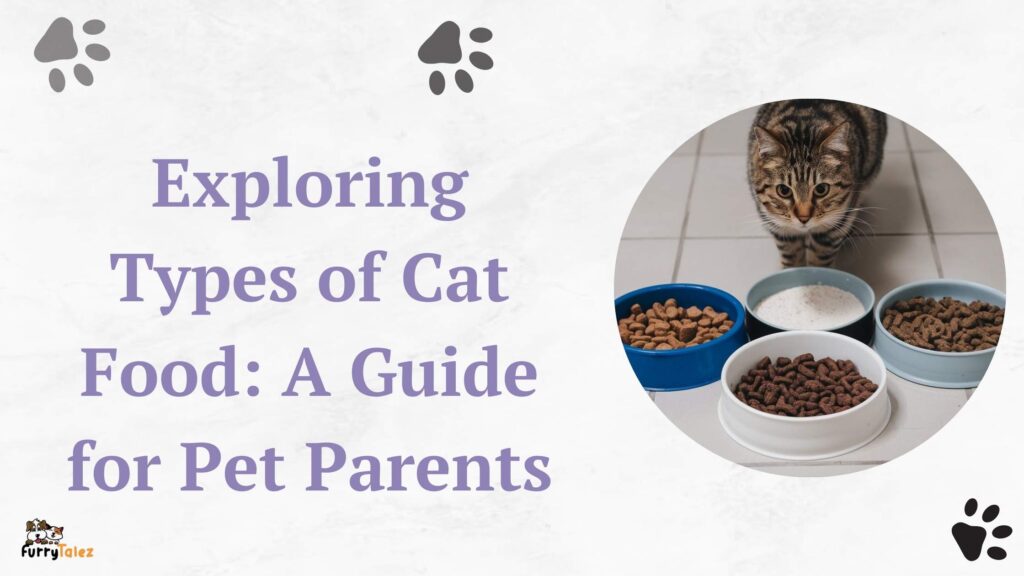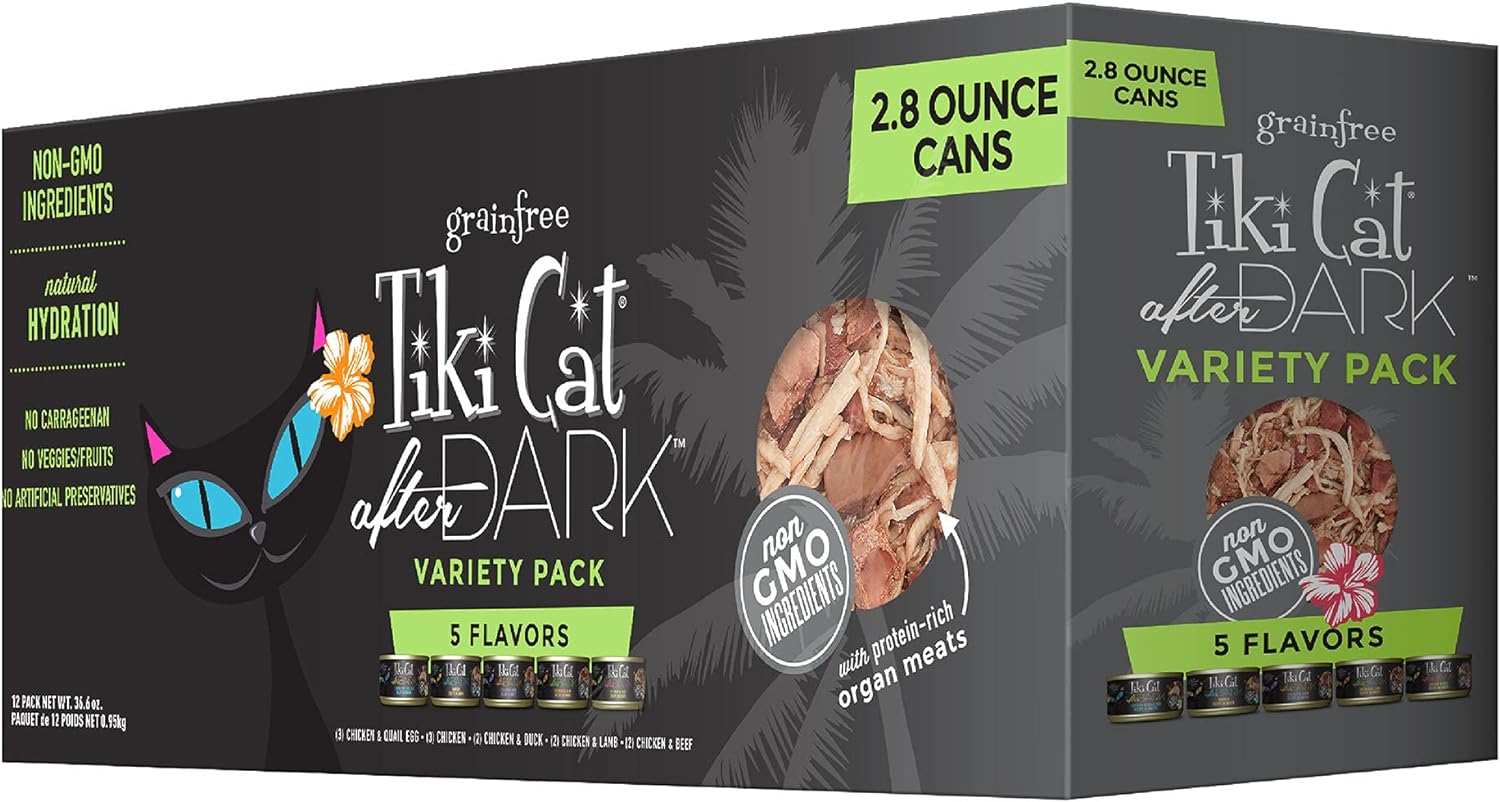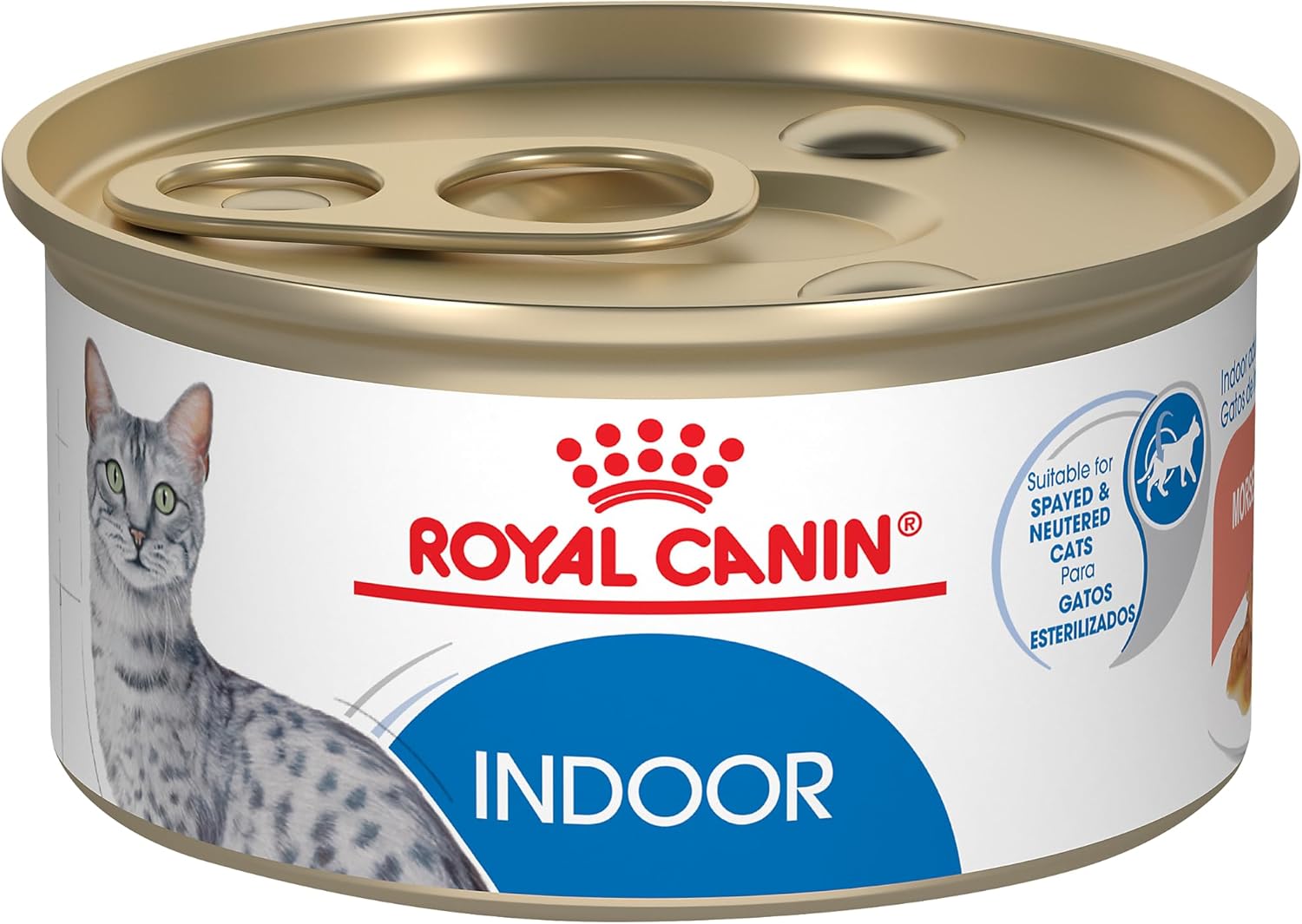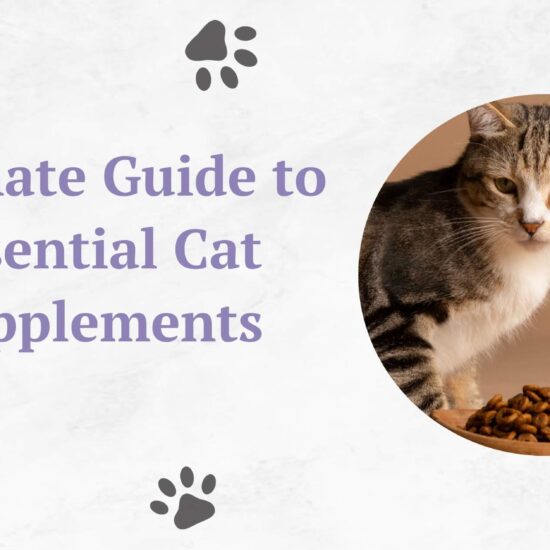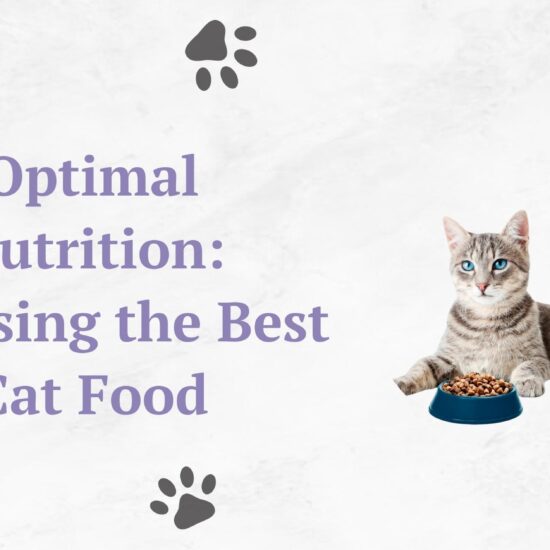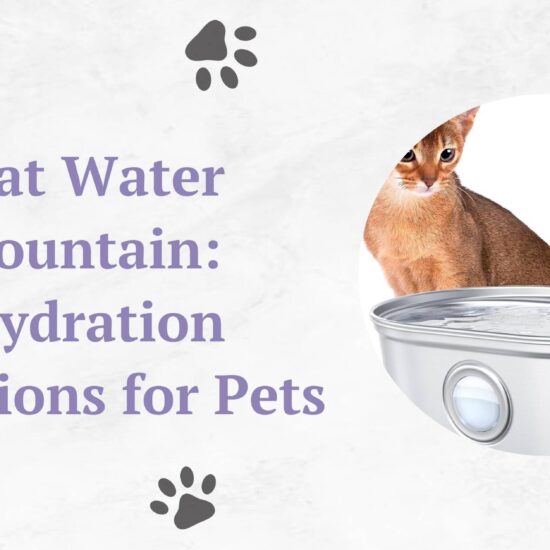As pet parents, we often wonder about our cat’s health and happiness. It’s more than just a meal; it shapes their lives and energy. Cats need a high-protein diet, and the food we choose is key.
There are many options, like wet cat food for hydration and dry cat food for convenience. But, it can be hard to choose the right one. Understanding your cat’s nutritional needs is vital for their health.
Let’s explore the different types of cat food together. We’ll debunk myths and focus on the good stuff cats need. We’ll avoid unhealthy fillers and toxic ingredients like onion and garlic.
Table of Contents
Understanding Cat Nutrition
Cat nutrition is key to their health and happiness. Cats need a diet rich in animal proteins to stay healthy. This section will explore the important nutrients for cats and how they affect their health.
Essential Nutrients for Cats
Cats need over a dozen essential nutrients to stay healthy. These include:
- Proteins: Important for muscle growth and repair.
- Amino Acids: Like taurine, vital for heart and eye health.
- Vitamins: Such as A, D, E, and B vitamins for various functions.
- Minerals: Key for bone health and metabolism.
- Fatty Acids: Needed for skin health and energy.
Commercial cat foods meet nutritional guidelines set by experts. For example, adult cat food must have at least 26% crude protein. Canned cat food is also good for hydration, with a minimum of 75% moisture.
Impact of Nutrition on Overall Health
Nutrition greatly affects a cat’s health. A balanced diet can prevent many health problems, like obesity and dental diseases. It’s important to keep treats to 10 to 15 percent of their daily calories to avoid weight gain.
Feeding a variety of foods can also help. This prevents boredom and ensures they get all the nutrients they need. Vitamins and minerals are often added to commercial foods to make sure they are complete. For example, Vitamin A is crucial for vision and skin, while Vitamin D is important for bones.
Types of Cat Food

Cat food comes in many forms, each with its own benefits. Knowing these types helps pet owners choose the right food for their cats. This section looks at Wet Cat Food and Dry Cat Food, and compares Grain-Free Diets with Traditional Cat Food.
Overview of Wet and Dry Food Options
Dry cat food, or kibble, is the most popular choice. It’s convenient, affordable, and helps clean teeth. It should have at least 70% animal protein and some carbs like white rice.
Wet Cat Food, on the other hand, is high in moisture. This makes it great for cats that don’t drink enough water. It’s also less processed and has more protein or fat, fitting cats’ natural diet.
Comparison of Grain-Free and Traditional Diets
Choosing between Grain-Free Diets and Traditional Cat Food is a big decision. Grain-Free diets are good for cats with allergies or sensitivities. They have a single protein and carb source, aiming to avoid food issues.
Traditional Cat Food includes grains like corn, wheat, and soy. These provide energy but should only be a small part of a cat’s diet, around 10-15%.
Here’s a comparison of Grain-Free and Traditional diets:
| Aspect | Grain-Free Diet | Traditional Cat Food |
|---|---|---|
| Protein Source | High-quality animal protein | Mixed protein sources, often including grains |
| Carbohydrate Content | Low carbohydrate levels | Higher carbohydrate levels from grains |
| Hydration | Variable (depending on wet vs. dry) | Variable (dry food typically lower in moisture) |
| Digestive Health | Good for sensitive stomachs | Can cause issues in sensitive cats |
| Cost | Often higher | Generally lower and more available |
Each diet has its benefits and should be chosen based on a cat’s health and preferences. Talking to a vet can help find the best diet for your cat.
Benefits of Wet Cat Food
Wet cat food has many benefits for cats. It has a lot of moisture, which is seven times more than dry food. This helps keep cats hydrated and supports their urinary health.
It can also help prevent urinary tract diseases, especially in male cats. Good hydration is key for their health.
Hydration and Digestion
Wet cat food is also lower in calories than dry food. It has more protein and fewer carbs. This matches a cat’s natural diet as a meat-eater.
It gives cats the right amino acids and fatty acids for health. Cats may also digest better with wet food because of its moisture.
Top Brands: Tiki Cat Wet Food and Royal Canin Canned Cat Food
Brands like Tiki Cat Wet Food and Royal Canin Canned Cat Food are known for quality. They make recipes that meet a cat’s dietary needs. However, wet food can be more expensive than dry food.
It’s important to store opened cans in the fridge and use them within 48 hours. This keeps the food fresh and nutritious for cats.
| Feature | Wet Cat Food | Dry Cat Food |
|---|---|---|
| Moisture Content | 70-80% | 6-10% |
| Calories | Lower | Higher |
| Protein Proportion | Higher | Lower |
| Carbohydrate Level | Lower | Higher |
| Cost | More Expensive | Less Expensive |
| Shelf Life (Opened) | 24-48 hours | Months |
Tiki Cat Wet Food
Royal Canin Canned Cat Food
Benefits of Dry Cat Food
Dry cat food is great for cats and their owners. It’s easy to use and lasts longer than wet food. Buying it in bulk can also save money.
Convenience and Dental Health
Dry cat food is good for Dental Health. It helps clean teeth and gums as cats chew. But, cats need fresh water because dry food doesn’t have much.
Mixing flavors can keep cats interested. This stops them from getting bored with the same taste.
Recommended Brands: Temptations Dry Cat Food and Fancy Feast Dry Cat Food
Temptations Dry Cat Food and Fancy Feast Dry Cat Food are top picks. Temptations has tasty flavors and textures that cats love. It also helps keep them healthy.
Fancy Feast offers many types of dry food. They focus on taste and nutrition. Both brands help find the right food for your cat.
| Brand | Key Features | Benefits |
|---|---|---|
| Temptations Dry Cat Food | Variety of flavors, crunchy texture | Supports dental health, highly palatable |
| Fancy Feast Dry Cat Food | Diverse recipes, tailored nutrition | Meets specific dietary needs, promotes overall health |
Life-Stage Specific Nutrition
It’s important to give cats the right food at each stage of their life. Kittens, adults, and seniors all have different needs. The right food helps them stay healthy and live a long life.
Dietary Needs for Kittens
Kittens grow fast and need lots of protein. Foods with animal ingredients help with brain, muscle, and bone growth. They also keep the skin and coat healthy.
Brands like ACANA™ make special kitten food. For example, ACANA™ First Feast and ACANA™ Highest Protein Kitten recipe. These foods help kittens grow strong and smart.
- ACANA PREMIUM PATE™ Kitten recipe with Chicken & Tuna provides hydration and essential proteins.
- Animal proteins support eye health and digestion, crucial for active kittens.
- Gradual transitions to adult cat nutrition should take place over approximately one week as kittens approach adulthood.
Nutritional Requirements for Adult Cats
Adult cats need different foods than kittens. They need lots of animal proteins, Omega fatty acids, EPA, DHA, and taurine. These help keep their heart, skin, coat, and eyes healthy.
ACANA™ Highest Protein Meadowlands recipe is great for adult cats. It has everything they need. Hydrating recipes, like ACANA PREMIUM PATE™, help keep them hydrated.
- Products like ACANA™ Indoor Entrée cater specifically to indoor cats’ needs, supporting weight management.
- Senior cats aged seven and older should gradually shift to specially formulated senior diets, such as ACANA® Senior Entrée, providing necessary support for joint health and digestion.
- Rotational diets expose cats to various proteins, minimizing sensitivity to food components.
| Life Stage | Key Nutritional Components | Recommended Brands |
|---|---|---|
| Kittens | High protein, DHA, EPA, essential vitamins | ACANA™ First Feast, ACANA™ Highest Protein Kitten |
| Adults | Animal protein, Omega fatty acids, taurine | ACANA™ Highest Protein Meadowlands, ACANA PREMIUM PATE™ |
| Seniors | Protein, fatty acids, fiber, prebiotics | ACANA® Senior Entrée |
Special Dietary Needs and Considerations
Feeding your cat right is key to their health. Cats with sensitivities or allergies need special diets. Grain-Free and Hypoallergenic Cat Food can help. These diets address health issues and ensure your cat gets the nutrients they need.
Grain-Free and Hypoallergenic Options
Grain-Free Options are good for cats with food sensitivities or allergies. These diets are rich in protein, fitting cats’ natural diet as meat-eaters. Hypoallergenic cat food removes common allergens, helping your cat feel better.
Choose high-quality foods with lots of protein and amino acids. Many brands offer special formulas for cats with allergies. Foods with new protein sources can be especially helpful.
Weight Management Diets
Weight Management Diets are crucial for overweight cats. Obesity can harm their health and shorten their life. A diet with the right calories is essential for losing weight safely.
Feeding smaller meals can prevent overeating. Watch your cat’s weight and adjust their food as needed. Keep an eye on their activity level too.
Foods Toxic to Cats
Knowing which foods are dangerous is key for cat owners. Many foods can harm cats. It’s important to know which Ingredients to Avoid to keep your pet safe. Always check food labels carefully.
Common Ingredients to Avoid
- Onions: All forms can lead to anemia by damaging red blood cells.
- Garlic: This ingredient is five times more potent than onions and can cause severe health problems.
- Alcohol: Even a small quantity can be poisonous, resulting in vomiting, disorientation, or worse.
- Caffeine: Found in coffee and tea, it can be fatal in large amounts.
- Grapes and Raisins: These can lead to unexplained kidney failure.
- Avocados: Contain persin, which can cause digestive issues.
- Macadamia Nuts: Toxic in both raw and roasted forms, leading to vomiting and lethargy.
- Yeast: Small amounts of raw dough can expand in the stomach, causing severe pain and potentially needing surgery.
Understanding the Dangers of Onion and Garlic
Onion and garlic safety is very important for cat owners. These common kitchen ingredients are toxic to cats. They can cause health problems like weakness and discolored urine.
It’s crucial for pet owners to be careful. Keep these harmful Foods Toxic to Cats away from your pet. This helps prevent health risks and keeps your cat well.
Best Wet Cat Food Options
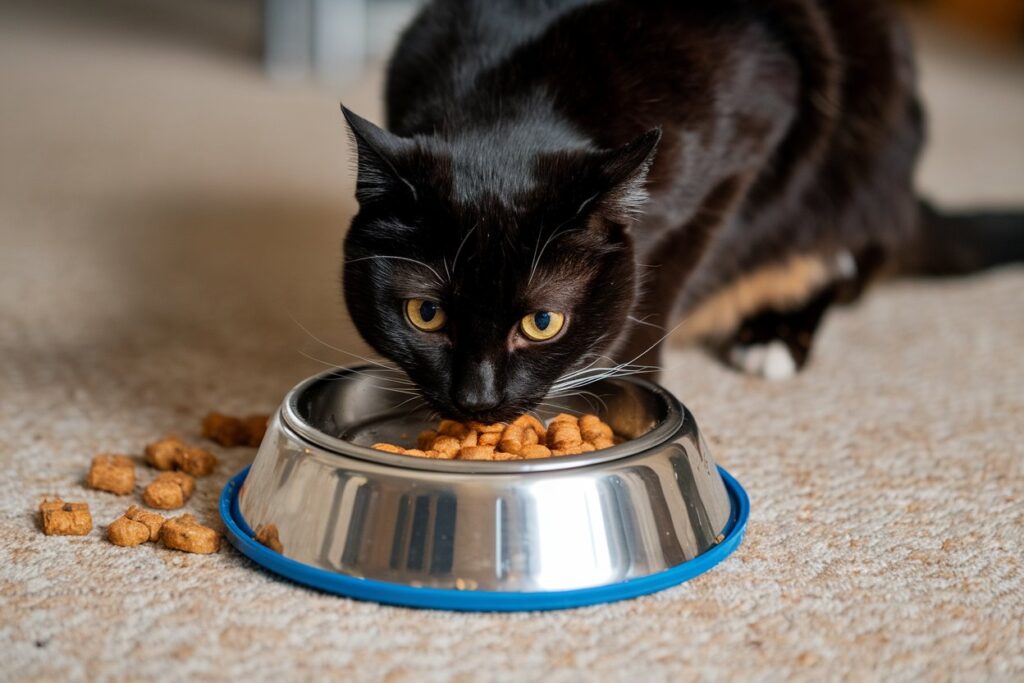
Choosing the right wet cat food is key to your cat’s health. Wet cat food is full of moisture, which is great for cats. Organomics Chicken Dinner Grain-Free Pate Wet Cat Food is a top pick. It has quality ingredients and no grains, fitting a cat’s natural diet.
Featured Products: Organomics Chicken Dinner Grain-Free Pate Wet Cat Food
Organomics Chicken Dinner is a top choice for cats. It has lots of protein and moisture. The grain-free formula is good for cats with food sensitivities. It’s also very tasty, even for picky eaters.
Best Wet Cat Food for Indoor Cats
Indoor cats need special food. Royal Canin Adult Feline Health Nutrition Morsels in Gravy Cat Food is a great choice. It has 83.0% moisture, keeping indoor cats hydrated. Hill’s Science Diet Senior Wet Cat Food Savory Chicken Entree is also good, with 8.0% crude protein for senior cats.
Other great options for indoor cats include:
- Purina Fancy Feast Petites Gourmet Gravy Wet Cat Food – Crude protein: 10.0%
- Tiki Cat Luau Wild Salmon in Salmon Consomme – Crude protein: 15.5%
- Wellness Complete Health Grain-Free Wet Canned Cat Food Chicken & Herring Dinner – Protein: 11.0%
These foods provide important nutrients and help with hydration and weight. They’re essential for indoor cats.
| Product | Crude Protein % | Crude Fat % | Moisture % | Suitable For |
|---|---|---|---|---|
| Organomics Chicken Dinner | Varies | Varies | Varies | General |
| Royal Canin Indoor Morsels | 8.1% | 2.2% | 83.0% | Indoor Cats |
| Hill’s Science Diet | 8.0% | 4.0% | 78.0% | Senior |
| Purina Fancy Feast | 10.0% | 2.0% | 82.0% | General |
| Tiki Cat Luau Salmon | 15.5% | 3.5% | 80.0% | General |
Choosing the best wet cat food, especially for indoor cats, is important. It ensures they get the right nutrition and stay hydrated.
Best Dry Cat Food Options

Finding the right dry cat food is key for your cat’s health. Soft Dry Cat Food is great for cats of all ages. It’s easy to chew and packed with nutrients for growth.
This section looks at the best foods for adult cats and kittens. We focus on nutrition and how easy it is to eat.
Choosing Soft Dry Cat Food
Soft Dry Cat Food is a great mix of texture and nutrition. Older cats or those with dental problems like softer kibble. Brands like Acana and Blue Buffalo make food that’s high in protein.
This is important for muscle and overall health. Look for food with real meat as the main ingredient. It’s better for digestion and nutrient absorption.
Top Recommendations for Kittens
For kittens, choose food with the right mix of proteins, fats, and carbs. Here are some top picks:
| Brand | Calories per Cup | Protein Content | Cost per Day |
|---|---|---|---|
| Royal Canin Kitten Feline Health Nutrition | 367 calories | 30% min | $1.05 |
| Purina Kitten Chow | 414 calories | 40% min | $0.95 |
| Iams ProActive Health Kitten | 350 calories | 32% min | $1.00 |
| Hill’s Science Diet Kitten | 330 calories | 33% min | $1.20 |
These foods give your kitten the nutrients they need to grow strong. Choosing the best dry cat food sets them up for a healthy life. High-quality, soft dry foods are key for lifelong health.
Note: There might be affiliate links mentioned here. We may receive a commission if you purchase a product through an affiliate link. There is no additional charge for you. Please do your own research before making any online purchases.
Reading and Understanding Cat Food Labels
Exploring cat food can be tough for pet owners. It’s key to understand Cat Food Labels to feed your cat right. These labels show the food’s name, ingredients, analysis, and if it’s nutritionally balanced. Each part tells you if the food is good for your cat.
Deciphering Ingredients and Nutrition Facts
The product name hints at the main ingredients. For example, “Tuna Cat Food” must be mostly tuna. Ingredients are listed by weight, so meat and fish are usually first. Knowing what’s in your cat’s food is crucial.
The Nutrition Facts in the Guaranteed Analysis section are important. They list the minimum and maximum of nutrients like protein and fat. If it says it meets the AAFCO Cat Food Nutrient Profiles, it’s a complete diet.
Terms like “natural” or “organic” might not mean what you think. “Organic” means at least 95% organic ingredients. “Natural” means no artificial stuff but doesn’t always mean better quality. Also, “100% All Natural” foods might still have vitamins and minerals.
Remember, wet cat food has a lot more moisture than dry food. Wet food has 75-78% moisture, while dry food has only 10-12%. Knowing this helps pick the best food for your cat. By looking at Cat Food Labels carefully, you can make sure your cat gets the right food.
How to Transition to a New Cat Food
Switching to a new cat food needs careful planning to avoid upsetting your cat’s stomach. Most vets suggest making changes slowly to prevent digestive issues. This gradual approach is key to keeping your pet healthy.
Gradual Diet Changes for Cats
Changing your cat’s diet should take about one to two weeks. Start by mixing the old and new food in a ratio of 75% old to 25% new. Then, gradually increase the new food to 50%, then 25%, and finally, switch to all new food. This slow transition helps your cat get used to the new taste and texture without stress.
Monitoring Pet Health During Transition
It’s crucial to watch your pet’s health closely during the transition. Look out for signs like vomiting, diarrhea, or changes in how much they eat. If these problems last more than 24 hours, see a vet.
Keep an eye on how much your cat eats and any bad reactions. If their hunger changes a lot, it might be a sign to check with a vet. By watching your cat closely and making changes slowly, you can help them adjust to a new diet smoothly.
Food Dosage Chart by Age and Weight
Knowing the right food amount is key to keeping your cat healthy and avoiding obesity. The Food Dosage Chart below gives clear feeding guidelines by age and weight. It helps kittens and adult cats get the nutrition they need. Following these guidelines helps your pet grow well and stay healthy.
Feeding Guidelines for Kittens
Kittens need special feeding to support their fast growth and development. Here are some key points:
- Newborn kittens should eat every three to four hours, six to eight times a day.
- Older kittens (4 to 8 weeks) need to eat every four to six hours.
- From 8 to 16 weeks, kittens need 250 to 280 calories daily, with larger breeds needing up to 360 calories.
- Kittens from 4 to 6 months old need 60 to 65 calories per pound of body weight daily.
- Feeding them multiple small meals a day helps with digestion, especially for younger kittens.
Feeding Recommendations for Adult Cats
Adult cats have different nutritional needs than kittens. Here are the best recommendations for their health:
- A 10-pound active cat needs about 346 kcal per day.
- Kittens between 4 to 6 months can eat two or three times a day as they grow.
- Adult cats need about 25 to 35 calories per pound of body weight daily.
- Senior cats, especially those 7-8 years and older, need fewer calories to stay healthy.
- Spayed or neutered cats might need fewer calories, while unaltered cats might need more due to a higher metabolism.
| Age/Weight | Kittens (Calories/Day) | Adult Cats (Calories/Day) |
|---|---|---|
| Newborn (0-4 weeks) | Liquid formula: 2 tbsp / 4 oz body weight | – |
| 4-8 weeks | Approximately 250-280 calories | – |
| 8-16 weeks | Up to 360 calories for larger breeds | – |
| 4-6 months | 60-65 calories/pound | – |
| Adult (Over 1 year) | – | 25-35 calories/pound |
| Senior (7-8 years+) | – | Calories often reduced |
Using these Food Dosage Charts and Feeding Recommendations will keep your cats healthy and happy. Always talk to your vet to adjust their diet based on their needs and activity level.
Consulting a Veterinarian on Cat Nutrition
Ensuring your cat’s health and happiness is crucial. Getting Cat Nutrition Advice from a vet is key. They consider your cat’s age, weight, and health when suggesting food.
Senior cats and kittens need special diets. These diets help them stay healthy and happy. A vet can guide you on the best food for your cat.
Using Veterinarian Guidance helps avoid problems like obesity and food allergies. Cats need a lot of protein to stay healthy. Changing their diet too fast can upset their stomach.
Regular vet visits and advice are important. Knowing your cat’s lifestyle helps too. This includes feeding them wet food and avoiding free-choice feeding. An informed owner makes better choices for their cat’s health.
Disclaimer: The information provided in this article is for educational purposes only and should not be considered as a substitute for medical advice. Consult a registered Veterinary practitioner before using or trying any product suggested here in this article.
FAQs
What are the main benefits of wet cat food?
Wet cat food, like Organomics Chicken Dinner Grain-Free Pate Wet Cat Food, has more moisture. This helps keep your cat hydrated and can prevent urinary problems. It’s also more tasty for picky eaters and supports their digestive health.
How do I choose the right cat food for my kitten?
For your kitten, look for Best Dry Cat Food for Kittens or Wet Cat Food for Kittens. These should be rich in protein and nutrients for growth. Always ask your vet for advice tailored to your kitten.
Is grain-free cat food suitable for all cats?
Grain-free cat food is good for cats with dietary sensitivities or allergies. But, it’s key to watch your cat’s health and talk to your vet. They can tell if a grain-free diet is right for your cat.
What makes dry cat food a good option?
Dry cat food is easy to store because it lasts longer. It also helps keep your cat’s teeth clean by reducing plaque. Brands like Temptations and Fancy Feast offer different types for various needs.
How can I tell if a cat food label meets AAFCO standards?
Check the label for the AAFCO statement. It shows the food meets your cat’s nutritional needs. Make sure it lists real protein sources and essential nutrients, and avoid artificial additives.
What common foods should I avoid giving to my cat?
Don’t give your cat onions, garlic, chocolate, or caffeine. They’re toxic. Always read labels to make sure these harmful ingredients aren’t in your cat’s food.
How can I transition my cat to a new food?
Gradually introduce your cat to new food over a week. Start by mixing a little new food with their old food. Slowly increase the new food while watching for any digestive problems.
Why is life-stage nutrition important for cats?
Cats need different nutrients at different stages of life. Kittens need more protein for growth, while adult cats need food that helps them stay healthy and at a good weight. Always check your cat’s needs as they get older.
Can cats have special dietary needs?
Yes, some cats need special diets because of allergies, sensitivities, or health issues. There are foods like hypoallergenic cat food or weight management diets made for these needs.
What are the best wet food options for indoor cats?
For indoor cats, look for foods that consider their lower activity levels. Brands like Tiki Cat Wet Food offer nutrition tailored for indoor cats.


